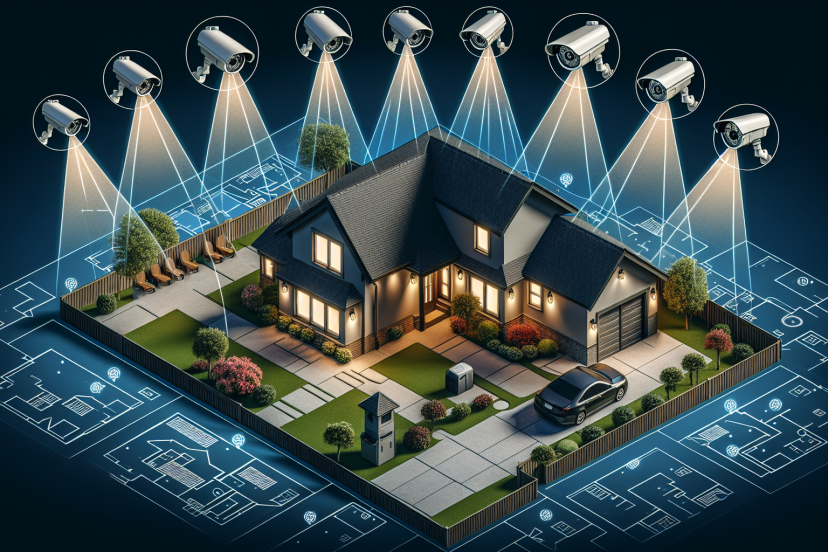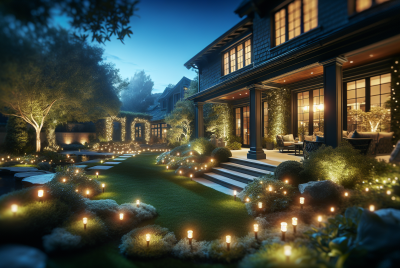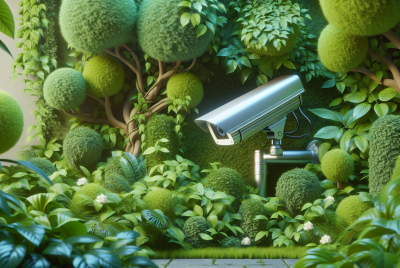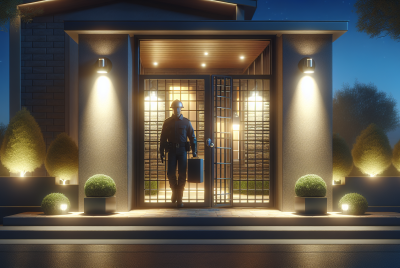Best Practices For Positioning Outdoor Security Cameras
In this article, you will discover the best practices for positioning outdoor security cameras to maximize their effectiveness in protecting your property. Whether you are a homeowner or a business owner looking to enhance your security measures, understanding how to position your cameras strategically is crucial. By implementing these best practices, you can ensure that your outdoor security cameras are positioned in the most effective locations, providing you with peace of mind and a reliable deterrent against potential threats.
Determining the Best Locations for Outdoor Security Cameras
When setting up outdoor security cameras, it is crucial to choose the right locations to maximize their effectiveness. Here are some key areas to consider when determining where to place your cameras:
Front and Back Entrances
The front and back entrances of your property are prime areas for placing security cameras. These points of entry are often the first targets for intruders, so having cameras in these locations can help deter potential criminals and provide valuable footage if an incident occurs.
Garage and Driveway
Your garage and driveway are another critical area to monitor with security cameras. Many homeowners store valuable items in their garages and cars, making them attractive targets for thieves. By placing cameras in these areas, you can keep a close eye on any suspicious activities and ensure the safety of your vehicles and belongings.
Backyard and Patio
Don’t forget to secure your backyard and patio with outdoor security cameras as well. These areas are often overlooked but can be vulnerable to break-ins or vandalism. By capturing any unusual activities in your backyard, you can protect your property and loved ones.
Windows and Balconies
Windows and balconies are potential entry points for burglars, so it’s essential to position cameras to monitor these areas. By doing so, you can detect any attempts to gain unauthorized access and provide evidence in case of a break-in.
Common Areas and Pathways
If you live in a neighborhood or have communal spaces around your property, consider placing security cameras in common areas and pathways. These areas can include parks, playgrounds, or shared driveways. By monitoring these places, you not only enhance your security but also contribute to the safety of your community.
Blind Spots
Take note of any blind spots that may exist around your property. These are areas where a camera’s view may be obstructed, leaving a gap in your surveillance coverage. It’s essential to identify and address these blind spots by strategically positioning additional cameras or making adjustments to existing ones.
Perimeter Coverage
To ensure comprehensive coverage of your property, aim to cover your entire perimeter with outdoor security cameras. Intruders may attempt to gain access through any side of your property, so having cameras that capture a 360-degree view will help prevent any unauthorized entries.
Outdoor Structures
If you have any outdoor structures like sheds, workshops, or guest houses, they should be included in your security camera placement strategy. These structures can store valuable items or serve as potential hiding spots for intruders. By monitoring these areas, you can prevent thefts or quickly apprehend any unauthorized individuals.
Parking Areas
If you have parking areas around your property, it is essential to include them in your camera placement plan. This is particularly important for businesses with parking lots where employees and customers park their vehicles. By having cameras monitoring these areas, you can deter thefts, vandals, and other criminal activities.
Special Considerations for Business Locations
For businesses, there may be additional security considerations when determining camera locations. Take into account areas with high-value assets, entrances and exits, cash registers, and employee workstations. By strategically placing cameras in these areas, you can protect your business from external threats and also monitor internal activities.
Ideal Angles and Heights for Outdoor Security Cameras
Once you have identified the best locations for your outdoor security cameras, it’s important to consider the ideal angles and heights at which to position them. This ensures optimal surveillance coverage and maximizes the effectiveness of your cameras.
Optimal Camera Angles
To achieve the best camera angles, cameras should be positioned to capture a wide field of view while minimizing blind spots. Ideally, the camera lens should be slightly tilted downward, providing a view that covers both the ground and a portion of the area in front of it. This angle allows for the identification of individuals and specific details, such as license plates, without sacrificing coverage of the surrounding area.
Recommended Mounting Heights
The mounting height for outdoor security cameras depends on the area being monitored. For residential properties, it is recommended to mount the cameras approximately 9 to 10 feet above the ground. This height provides a good balance between capturing a wide field of view and maintaining a level of detail that can be useful for identification.
For commercial locations, the mounting height may vary depending on the specific needs of the business. In areas where the camera needs to capture finer details, such as facial recognition, a lower mounting height may be necessary. However, it is important to ensure that the camera is out of the reach of potential vandals or tampering.
Avoiding Obstructions
When placing outdoor security cameras, it is crucial to avoid any obstructions that may impair the camera’s view. Common obstructions can include tree branches, awnings, or other structures. These obstructions can not only limit the camera’s field of view but also potentially damage the camera if they were to fall onto it. Therefore, it is important to regularly trim vegetation and check for any potential obstructions that may hinder the camera’s performance.
Coverage Overlap
To ensure seamless surveillance coverage, consider the overlap between camera views. This ensures that there are no blind spots between cameras and that any suspicious activity is captured from multiple angles. By properly positioning your cameras to provide adequate coverage overlap, you can minimize the risk of missed events and improve the overall effectiveness of your security system.
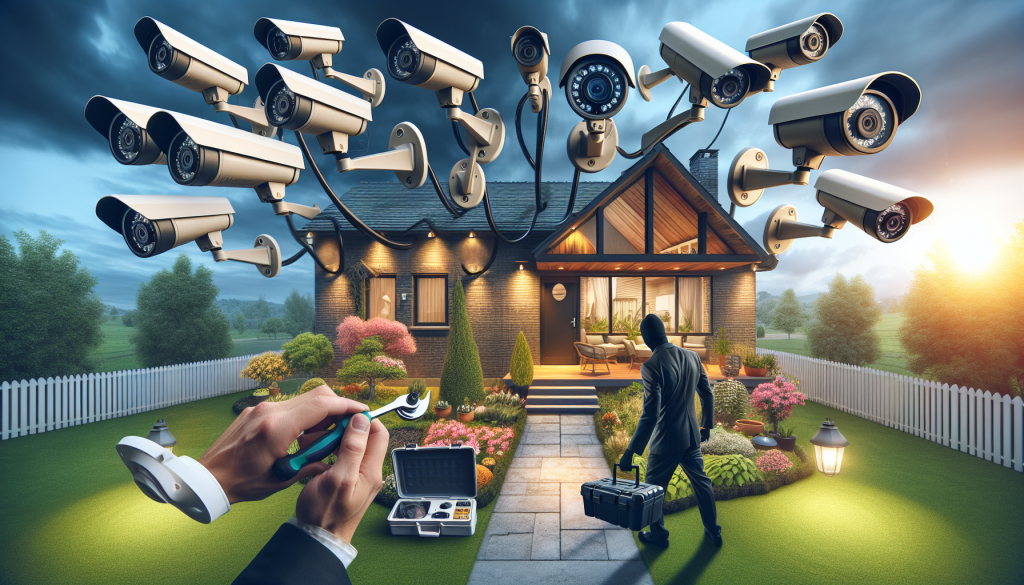
Maintaining a Wide Field of View
A wide field of view is crucial for outdoor security cameras as it allows you to capture more of the surrounding area and detect potential threats. Here are some factors to consider for maintaining a wide field of view:
Choosing Cameras with Wide-Angle Lenses
When selecting outdoor security cameras, opt for cameras with wide-angle lenses. These lenses have a broader field of view, allowing you to monitor larger areas with a single camera. Wide-angle lenses are particularly useful for monitoring open spaces such as yards or parking lots.
Lens Focal Length and Field of View
The lens focal length directly impacts the field of view of a camera. A smaller focal length, such as 2.8mm, will provide a wider field of view, while a larger focal length, such as 12mm, will result in a narrower field of view. Consider the specific needs of each camera placement and choose lenses accordingly to ensure the desired coverage.
Pan-Tilt-Zoom (PTZ) Cameras
For areas requiring flexible coverage, consider using pan-tilt-zoom (PTZ) cameras. These cameras can be remotely controlled and offer the ability to pan, tilt, and zoom as needed. PTZ cameras are particularly useful for large outdoor areas where the field of view needs to be adjusted regularly.
Camera Placement for Maximum Effectiveness
Proper camera placement is essential for ensuring the maximum effectiveness of your outdoor security cameras. Consider the following factors when positioning your cameras:
Avoiding Direct Sunlight
Direct sunlight can significantly impact the quality of camera footage. When placing outdoor security cameras, avoid positioning them directly facing the sun or locations where harsh sunlight can cause glare. This can wash out important details or result in overly bright footage, making it difficult to identify individuals or objects.
Dealing with Glare and Reflections
Glare and reflections can also pose challenges for outdoor security cameras. Certain surfaces, such as windows or metal surfaces, can create glare that affects camera performance. To mitigate this, carefully select camera locations that minimize glare and consider using cameras with anti-glare features.
Consideration of Infrared Capabilities
For nighttime surveillance, consider outdoor security cameras with infrared (IR) capabilities. IR cameras use infrared illumination to capture images in low-light conditions. When placing IR cameras, be mindful of any potential obstructions that may block the IR light, such as foliage or objects situated too close to the camera.
Avoiding Shadows and Low-Light Areas
To ensure optimal performance, avoid placing cameras in areas with significant shadows or low-light conditions. Shadows can obscure important details, making it difficult to identify individuals or objects. If possible, install additional lighting in these areas to improve visibility.
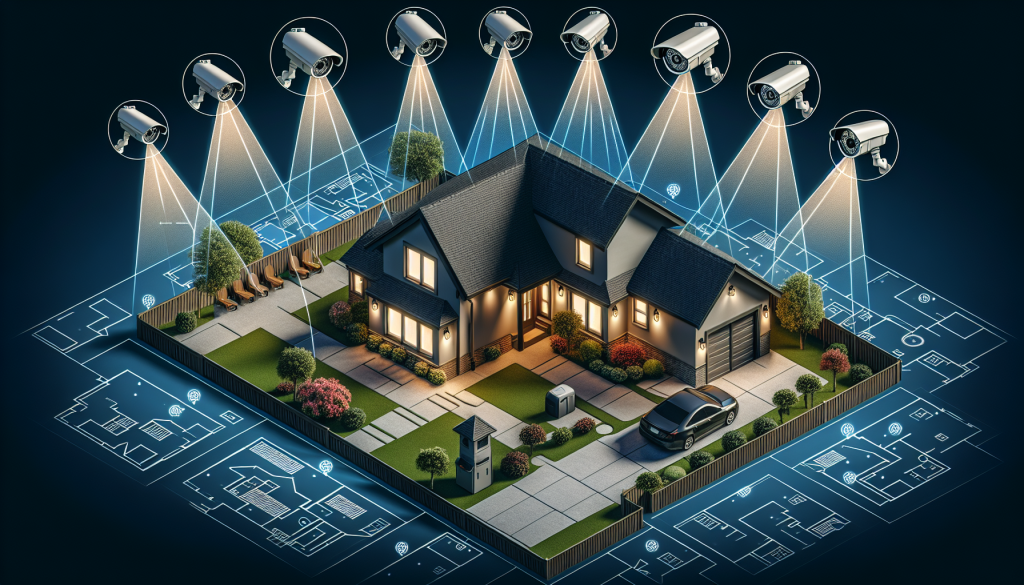
Securing and Protecting Outdoor Security Cameras
Ensuring the security and protection of your outdoor security cameras is essential to maintain their integrity and longevity. Here are some measures you can take to keep your cameras safe:
Weatherproofing and Vandal Resistance
Outdoor security cameras are exposed to various weather conditions, so it is crucial to choose cameras that are weatherproof and built to withstand harsh environments. Look for cameras with an Ingress Protection (IP) rating, indicating their resistance to dust and water. Additionally, consider cameras with vandal-resistant features to prevent tampering or damage.
Tamper-Proof Mounting and Cabling
To further enhance camera security, use tamper-proof mounting brackets and cabling. These measures make it more difficult for potential intruders to disable or tamper with your cameras. Additionally, ensure that the camera cables are hidden or protected to prevent unauthorized access or tampering.
Protecting Against Hacking
With the rise of smart devices, it is essential to take measures to protect your outdoor security cameras from hacking. Use strong and unique passwords for camera access, regularly update firmware, and ensure that your cameras are connected to a secure network. Regularly monitor your network for any suspicious activities or signs of unauthorized access.
Proper Maintenance and Cleaning
Regular maintenance and cleaning are crucial for the optimal operation of your outdoor security cameras. Clean the camera lenses and housings regularly to remove any dust, debris, or condensation buildup. Inspect the camera mounts and brackets for any signs of wear or damage and replace them as necessary. Performing these routine maintenance tasks will help ensure that your cameras continue to function properly and provide reliable security coverage.
Ensuring Adequate Lighting for Outdoor Security Cameras
The availability of adequate lighting is crucial for the performance of outdoor security cameras. Here’s what you need to consider when it comes to lighting:
Importance of Good Lighting
Good lighting is essential for capturing clear and detailed footage with outdoor security cameras. Insufficient lighting can result in grainy or blurry images, making it difficult to identify individuals or objects in the footage. By ensuring adequate lighting, you enhance the overall effectiveness of your surveillance system.
Choosing the Right Outdoor Lighting Solutions
To ensure adequate lighting, consider installing outdoor lighting solutions such as floodlights, motion-activated lights, or infrared illuminators. These lighting options can help provide the necessary illumination for capturing clear footage, particularly during nighttime surveillance. Select lighting solutions that are compatible with your camera’s requirements and position them strategically to avoid casting shadows or glare that may affect camera performance.
Positioning Lights for Optimal Camera Performance
When positioning outdoor lights, consider how they will impact the camera’s field of view. Avoid placing lights directly in front of the camera, as this can cause glare or wash out the footage. Instead, position the lights to the side or above the camera to provide even illumination without affecting image quality. By considering the positioning of outdoor lights, you can maximize the performance of your outdoor security cameras.
Integrating Outdoor Security Cameras with Other Systems
To create a comprehensive security system, it is beneficial to integrate outdoor security cameras with other systems. Here are some key integration strategies:
Connecting Cameras to a Video Surveillance System
Connect your outdoor security cameras to a video surveillance system for centralized monitoring and recording. This allows you to access and manage camera footage from a single interface, making it easier to review and analyze incidents. Ensure that your cameras are compatible with your chosen surveillance system, and follow the manufacturer’s instructions for proper installation and setup.
Syncing Cameras with Motion Detection Lights
Syncing outdoor security cameras with motion detection lights can significantly enhance their effectiveness. When a motion sensor detects movement, it can trigger both the camera to start recording and the lights to turn on, illuminating the area and capturing clear footage. This integration creates a deterrent effect and ensures that any potential threats are captured effectively.
Linking Cameras with Alarm Systems
Linking your outdoor security cameras with an alarm system provides an added layer of protection. When the alarm system is triggered, the cameras can be set to start recording or send live footage to a monitoring station. This integration enables a swift response to potential security breaches and allows for quick assessment of the situation.
Legal Considerations for Outdoor Surveillance
When deploying outdoor security cameras, it is essential to consider the legal implications and adhere to privacy laws and regulations. Here are some crucial factors to keep in mind:
Understanding Privacy Laws and Regulations
Familiarize yourself with the privacy laws and regulations in your jurisdiction that govern the use of surveillance cameras. These laws may vary from place to place, but generally, they govern issues such as where and how cameras can be positioned and how the captured footage can be used. Ensure that you comply with these laws to avoid any legal consequences.
Informing and Obtaining Consent from Individuals
If you are monitoring an area where individuals may have a reasonable expectation of privacy, such as residential areas or workplaces, it is important to inform them about the presence of cameras. Display signs or notices in visible locations to indicate that surveillance cameras are in use. Additionally, consider obtaining consent from individuals whose image or activities may be recorded by your outdoor security cameras.
Proper Camera Placement to Protect Privacy
When positioning outdoor security cameras, take steps to protect the privacy of individuals within your camera’s field of view. Avoid positioning cameras in areas where they can intrude on private spaces, such as bedrooms or bathrooms. Instead, aim to capture public areas and points of entry while respecting the privacy rights of others.
Conclusion
Positioning outdoor security cameras correctly is essential for creating an effective and comprehensive surveillance system. By carefully considering the best locations, angles, and heights for your cameras, maintaining a wide field of view, securing and protecting the cameras, ensuring adequate lighting, integrating them with other systems, and adhering to legal considerations, you can maximize the effectiveness of your outdoor security measures. Remember to regularly assess and adjust your camera placement as needed to adapt to changing security needs. With the right planning and strategic placement, your outdoor security cameras can provide valuable protection and peace of mind.

